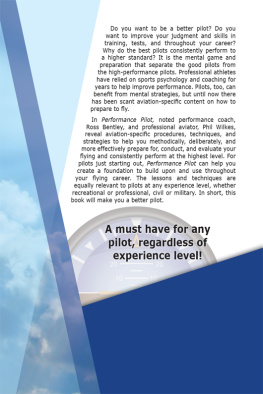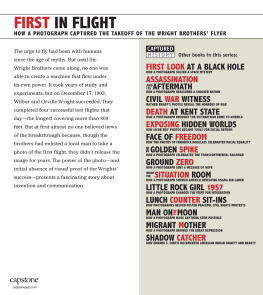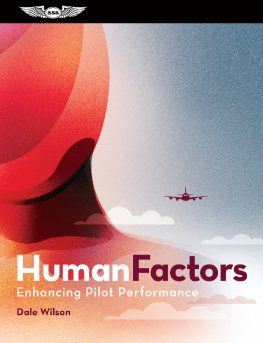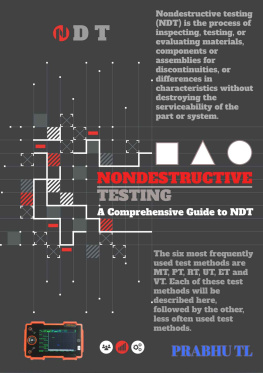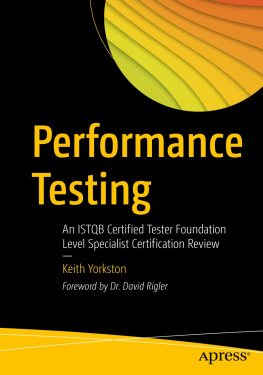To obtain material from the disk that accompanies the printed version of this eBook, please .
Material from the disk that accompanies the printed version of this eBook may be obtained from McGraw-Hill Professionals MediaCenter at http://mhprofessional.com/mediacenter.
Some material may require a desktop or laptop computer for full access.
Enter this eBooks ISBN and your e-mail address at the MediaCenter to receive an e-mail message with a download link.
This eBooks ISBN is 978-0-07-166260-4.


Copyright 2002 by McGraw-Hill Education. All rights reserved. Except as permitted under the United States Copyright Act of 1976, no part of this publication may be reproduced or distributed in any form or by any means, or stored in a database or retrieval system, without the prior written permission of the publisher.
ISBN: 978-0-07-166260-4
MHID: 0-07-166260-X
The material in this eBook also appears in the print version of this title: ISBN: 978-0-07-137679-2, MHID: 0-07-137679-8.
All trademarks are trademarks of their respective owners. Rather than put a trademark symbol after every occurrence of a trademarked name, we use names in an editorial fashion only, and to the benefit of the trademark owner, with no intention of infringement of the trademark. Where such designations appear in this book, they have been printed with initial caps.
McGraw-Hill Education eBooks are available at special quantity discounts to use as premiums and sales promotions, or for use in corporate training programs. To contact a representative please e-mail us at bulksales@mcgraw-hill.com.
Information contained in this work has been obtained by The McGraw-Hill Companies, Inc. (McGraw-Hill) from sources believed to be reliable. However, neither McGraw-Hill nor its authors guarantees the accuracy or completeness of any information published herein and neither McGraw-Hill nor its authors shall be responsible for any errors, omissions, or damages arising out of use of this information. This work is published with the understanding that McGraw-Hill and its authors are supplying information but are not attempting to render engineering or other professional services. If such services are required, the assistance of an appropriate professional should be sought.
TERMS OF USE
This is a copyrighted work and McGraw-Hill Education and its licensors reserve all rights in and to the work. Use of this work is subject to these terms. Except as permitted under the Copyright Act of 1976 and the right to store and retrieve one copy of the work, you may not decompile, disassemble, reverse engineer, reproduce, modify, create derivative works based upon, transmit, distribute, disseminate, sell, publish or sublicense the work or any part of it without McGraw-Hill Educations prior consent. You may use the work for your own noncommercial and personal use; any other use of the work is strictly prohibited. Your right to use the work may be terminated if you fail to comply with these terms.
THE WORK IS PROVIDED AS IS. McGRAW-HILL EDUCATION AND ITS LICENSORS MAKE NO GUARANTEES OR WARRANTIES AS TO THE ACCURACY, ADEQUACY OR COMPLETENESS OF OR RESULTS TO BE OBTAINED FROM USING THE WORK, INCLUDING ANY INFORMATION THAT CAN BE ACCESSED THROUGH THE WORK VIA HYPERLINK OR OTHERWISE, AND EXPRESSLY DISCLAIM ANY WARRANTY, EXPRESS OR IMPLIED, INCLUDING BUT NOT LIMITED TO IMPLIED WARRANTIES OF MERCHANTABILITY OR FITNESS FOR A PARTICULAR PURPOSE. McGraw-Hill Education and its licensors do not warrant or guarantee that the functions contained in the work will meet your requirements or that its operation will be uninterrupted or error free. Neither McGraw-Hill Education nor its licensors shall be liable to you or anyone else for any inaccuracy, error or omission, regardless of cause, in the work or for any damages resulting therefrom. McGraw-Hill Education has no responsibility for the content of any information accessed through the work. Under no circumstances shall McGraw-Hill Education and/or its licensors be liable for any indirect, incidental, special, punitive, consequential or similar damages that result from the use of or inability to use the work, even if any of them has been advised of the possibility of such damages. This limitation of liability shall apply to any claim or cause whatsoever whether such claim or cause arises in contract, tort or otherwise.
To my mother and father, who made my career possible, and to the little town of Dillsburg, where I grew up
Contents
Acknowledgments
I am very grateful to Capt. William L. Posnett, USN (Ret.), former Navy test pilot, for developing a number of the data reduction methods used in , and for reviewing that chapter. I would like to thank Micro Aerodynamics, Inc. and Sportys Pilot Shop for providing pictures, as well as Cessna Aircraft Corp. and The New Piper Aircraft, Inc. for allowing me to publish performance information from their handbooks. I am indebted to Kristie Kalvin for her excellent typing services on this edition. Also, not to be overlooked is Karen Rider, who had the unenviable task of translating my handwritten notes into a typed manuscript for the first edition of this book back in 1982.
Introduction
In the late 1930s, Clarke Gable starred in the movie Test Pilot. He was dashing, daring, adventurous, rugged, and not too terribly bright. In appropriate garb he could equally well have played a cowboy, private eye, explorer, sea captain, or any one of dozens of heroes typical of that era. Of course, the helmet and goggles, the leather jacket and boots, and the white scarf unmistakably identified him as a pilot. In this role he threw airplanes around the sky, put them into screaming dives, and otherwise pushed them to and beyond their design limits, often to the chagrin of his employers. Sometimes he barely escaped by parachute as the airplane literally fell apart around him. Thus was established the Hollywood image of test flying.
Real-life testing (like most subjects exploited by the film industry) is quite different, however. New airplane designs are tested very carefully and methodically. They are flown only by the most skillful and experienced of pilots whose brains usually exceed their brawn. Their judgment must be honed to an even finer edge than their skill, and procedures must be followed to the letter.
In the early stages of flight testing, the airplane is very gently maneuvered to determine its degree of stability and control. Only after its handling qualities have been determined as acceptable is it pushed to test its endurance near design limits. If any problems arise, it goes back to the drawing board (or computer display, nowadays).
Once the airplane is proved to perform safely, it then progresses to another stage of flight testing. In this stage the airplane is carefully tested to see if it meets the performance that was expected of it when it was designed. This procedure is, therefore, appropriately termed, performance flight testing. Aircraft manufacturers employ rather sophisticated and complex equipment to make this determination, particularly in the case of military or other high-performance aircraft. For airplanes on the other end of the performance scale, there are many old techniques that are much simpler and work almost as well. Many of these can be employed by the average pilot with little technical experience beyond that normally required to obtain flight ratings. These procedures are pretty much devoid of thrills, involving maneuvers less hair-raising than those typically required to satisfy a commercial pilot examiner. They do, on the other hand, require some precision flying if fairly accurate results are to be obtained. Such precision would need to be at about the level expected in normal instrument flying.
Next page

